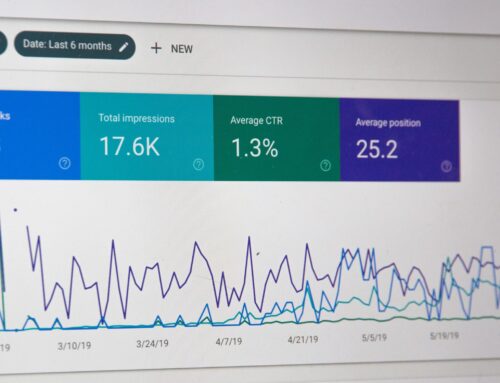 It is common to find issues that hinder productivity, operations, and overall employee performance. When this happens, it is time to take a step back and diagnose the problem that may be leading to this disruption in activity and profit.
It is common to find issues that hinder productivity, operations, and overall employee performance. When this happens, it is time to take a step back and diagnose the problem that may be leading to this disruption in activity and profit.
This is where a Needs Analysis comes into play.
A Needs Analysis is a process used to diagnose any issues that may be hindering the performance of a company. The solutions can be in many forms but when it comes to employee performance, if it is discovered that they lack knowledge or skills, then training is recommended. How do we start this training design? First, we must identify what skills and tasks are needed, then identify which skills and tasks need additional training.
There are two basic types of analysis – one focused on procedural skills and the other focused on more knowledge-based occupations.
Skills Gap Analysis
A Skills Gap Analysis is a tool used to identify the different skills and abilities that employees need to perform certain job-related tasks more effectively. A Skills Gap Analysis uses focus group feedback and interviews to identify the skills that are missing from an employee’s performance. Once the missing skills are identified, training can be developed to fill in those gaps.
Cognitive Task Analysis
A Cognitive Task Analysis, like a Skills Gap Analysis, is used to identify the tasks needed for an employee to perform their job. Unlike a Skills Gap Analysis, the Cognitive Task Analysis focuses on tasks that are less procedural and more knowledge based.
By combining the information from the Skills Gap Analysis and the Cognitive Task Analysis, learning needs can be identified and training can be developed to fill in the necessary knowledge gaps.
Meet Black and Gold Automotive
 Let’s look at an example. Black and Gold Automotive has recently experienced a drop in the number of sales completed in their dealership. They have had an influx of customers due to a new marketing campaign, but customers have complained about the sales experience. This has resulted in fewer cars being sold. They have also implemented a new online sales system but have had problems with employees using the system.
Let’s look at an example. Black and Gold Automotive has recently experienced a drop in the number of sales completed in their dealership. They have had an influx of customers due to a new marketing campaign, but customers have complained about the sales experience. This has resulted in fewer cars being sold. They have also implemented a new online sales system but have had problems with employees using the system.
They have decided to conduct a Skills Gap Analysis and a Cognitive Task Analysis to figure out exactly where training may be needed.
The Needs Analysis Process
When conducting any type of Needs Assessment, there is a recommended process to follow. This involves looking at data from various sources to pinpoint the issues and how to solve them.
Extant Data Required
The first thing to look at is something known as Extant Data. Extant data is anything that is collected in the form of paperwork. This can be in the form of surveys, sales and other data analytics and patterns, customer reviews and more.
Black and Gold Automotive decided to look at their customer surveys and reviews to see what customers complain about the most. They find that customers feel like the sales employees don’t have a strong understanding of the products they sell and the sales process. They can tell that the salespeople feel lost which makes them feel uncomfortable and less likely to purchase a vehicle.
The team at Black and Gold Automotive decided to survey their employees to see what they are most comfortable with and most concerned with.
Interviews and Focus Groups
 The next step is to create a series of questions and select several people in various levels of the position being evaluated for an interview. Interviews are often conducted with individuals but can also be conducted in small focus groups. It is during the interview process that more details are often given from observations and experiences of the employees and their supervisors.
The next step is to create a series of questions and select several people in various levels of the position being evaluated for an interview. Interviews are often conducted with individuals but can also be conducted in small focus groups. It is during the interview process that more details are often given from observations and experiences of the employees and their supervisors.
The team at Black and Gold Automotive gather stakeholders from different levels of the sales team. These stakeholders include sales staff with many years of experience at the company, those who are new to the company, and those in a more supervisory position. From this they discover that the sales staff who are on the sales floor don’t understand a lot of the sales process and are unfamiliar with the new sales software. Since they are uncomfortable with the new technology and procedures that have been put in place recently, they don’t act with the sales confidence they should. The supervisors provide insight on more specific skills and tasks that their employees should be performing and what they have seen not being among their teams.
Creating the Task List
After gathering the information from the interviews and focus groups, it is time to put together the Task List. This list shows the redefined task breakdown of what employees should be doing. This list will be used to create the learning map used to design the training.
DIF Survey
Once the tasks have been laid out and approved by the stakeholders at the highest level, a survey is sent out to determine the importance of each one. This is known as a DIF Survey. It is used to determine the Difficulty, Importance, and Frequency of the tasks being performed. These results help identify training priority, instead of using a more subjective approach to what needs to be trained.
Training Development
This starts by defining the courses based on the tasks included in the Task list. This includes the course description, learning objectives, and the knowledge checks or assessments.
Once this learning map has been created, the training development starts. The courses are created, approved, and launched to the desired learning audience.
Monitoring training success
 The process is not over when the training is launched. The final step involves monitoring the training to determine whether it is successful. Things to watch are how many employees are taking and completing the training, what their assessment scores are for each course, and most importantly, whether they are using what they’ve learned. The true test of training is if there has been a positive change in sales and productivity.
The process is not over when the training is launched. The final step involves monitoring the training to determine whether it is successful. Things to watch are how many employees are taking and completing the training, what their assessment scores are for each course, and most importantly, whether they are using what they’ve learned. The true test of training is if there has been a positive change in sales and productivity.
Black and Gold Automotive created sales training on how to work with customers, what the dealership offered to customers, and how to use the sales software. Once the training was launched, they saw a positive change among their employees and an increase in sales.
Why is this important?
Skills Gap Analysis and Cognitive Task Analysis are useful in identifying gaps in knowledge and skills among employee groups that hinder productivity. They can provide insight into training that can fill those knowledge or skill gaps. By improving employee knowledge and confidence in what they are meant to do, their performance will improve. When employees feel more confident that they know the tasks they need to perform, they are happier and more productive.
Interested in learning more about Digitec’s needs analysis process? Is your organization struggling with a performance problem and want to find out if training might be a solution? Contact Digitec Interactive now for a free consultation.
For more industry-focused articles like this, subscribe to our free monthly newsletter, Smarter…Faster!




